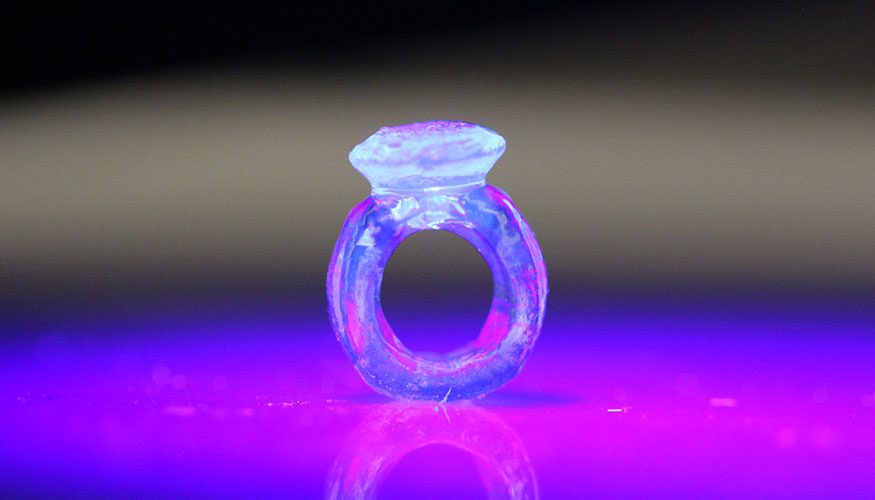New materials help expand volumetric 3D printing
29. 10. 2020 | Lawrence Livermore National Laboratory | www.llnl.gov
Researchers at Lawrence Livermore National Laboratory (LLNL) have adapted a new class of materials for their groundbreaking volumetric 3D printing method that produces objects nearly instantly, greatly expanding the range of material properties achievable with the technique.
The class of materials adapted for volumetric 3D printing are called thiol-ene resins, and they can be used with LLNL’s volumetric additive manufacturing (VAM) techniques, including Computed Axial Lithography (CAL), which produces objects by projecting beams of 3D-patterned light into a vial of resin. The vial spins as the light cures the liquid resin into a solid at the desired points in the volume, and the uncured resin is drained, leaving the 3D object behind in a matter of seconds.

Previously, researchers worked with acrylate‐based resins that produced brittle and easily breakable objects using the CAL process. However, the new resin chemistry, created through the careful balancing of three different types of molecules, is more versatile and provides researchers with a flexible design space and wider range of mechanical performance. With thiol-ene resins, researchers were able to build tough and strong, as well as stretchable and flexible, objects, using a custom VAM printer at LLNL. The work was recently published in the journal Advanced Materials and highlighted in Nature.
Read more at Lawrence Livermore National Laboratory
Image Credit: Maxim Shusteff
-jk-




